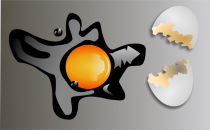
Is there too much air in chip packets? - Year 5 CLE

This downloadable resource explores the properties of gases and liquids.
The resource is a Connected Learning Experience in which the students not only explore the properties of gases and liquids but also follow instructions to predict the effect of changing a variable when planning an investigation. They will use equipment in safe ways and improve the accuracy of their results. Students will construct a table to organise data. They will compare their data with their predictions and describe the fairness of the investigation.
This CLE is aimed at enhancing a unit already being taught on the properties of solids, liquids and gases.
Learning intentions
Students will be able to:
- suggest explanations for the observed properties of gases;
- identify when science is used to ask questions and make predictions;
- discuss ways to conduct investigations and safely use equipment to make and record observations;
- use tables to organise their data and identify patterns in data;
- suggest explanations for observations and compare their findings with their predictions;
- suggest reasons why their methods were fair or not; and
- complete simple reports to communicate their methods and findings.
Australian Curriculum v9 Codes: AC9S5U04 (Year 5)
Additional Information
Each CLE may not encompass all the concepts and skills addressed in the specific content descriptions outlined by the Australian Curriculum: Science for that Year level. The Learning Intentions clearly define the aims and objectives of the CLE.
Year 5 Achievement Standard
This lesson sequence provides opportunities to gather information about students’ achievement of specific components in the standards (which are bolded in the statements below).
They classify substances according to their observable properties and behaviours. They explain everyday phenomena associated with the transfer of light. They describe the key features of our solar system. They analyse how the form of living things enables them to function in their environments. Students discuss how scientific developments have affected people’s lives, help us solve problems and how science knowledge develops from many people’s contributions.
Students follow instructions to pose questions for investigation and predict the effect of changing variables when planning an investigation. They use equipment in ways that are safe and improve the accuracy of their observations. Students construct tables and graphs to organise data and identify patterns in the data. They compare patterns in their data with predictions when suggesting explanations. They describe ways to improve the fairness of their investigations, and communicate their ideas and findings using multimodal texts.
- Year 5 > Science Inquiry Skills > Communicating > Communicate ideas, explanations and processes using scientific representations... > ACSIS093
- Year 5 > Science Inquiry Skills > Evaluating > Reflect on and suggest improvements to scientific investigations > ACSIS091
- Year 5 > Science Inquiry Skills > Planning and conducting > Decide which variable should be changed and measured in fair tests and... > ACSIS087
- Year 5 > Science Inquiry Skills > Planning and conducting > Identify, plan and apply the elements of scientific investigations to answer... > ACSIS086
- Year 5 > Science Inquiry Skills > Processing and analysing data and information > Compare data with predictions and use as evidence in developing explanations > ACSIS218
- Year 5 > Science Inquiry Skills > Processing and analysing data and information > Construct and use a range of representations, including tables and graphs, to... > ACSIS090
- Year 5 > Science Inquiry Skills > Questioning and Predicting > With guidance, pose clarifying questions and make predictions about scientific... > ACSIS231
- Year 5 > Science Understanding > Chemical Sciences > Solids, liquids and gases have different observable properties and behave in... > ACSSU077
- Year 5 > Science as a Human Endeavour > Nature and development of science > Science involves testing predictions by gathering data and using evidence to... > ACSHE081
- Year 5 > Science as a Human Endeavour > Use and influence of science > Scientific knowledge is used to solve problems and inform personal and... > ACSHE083


